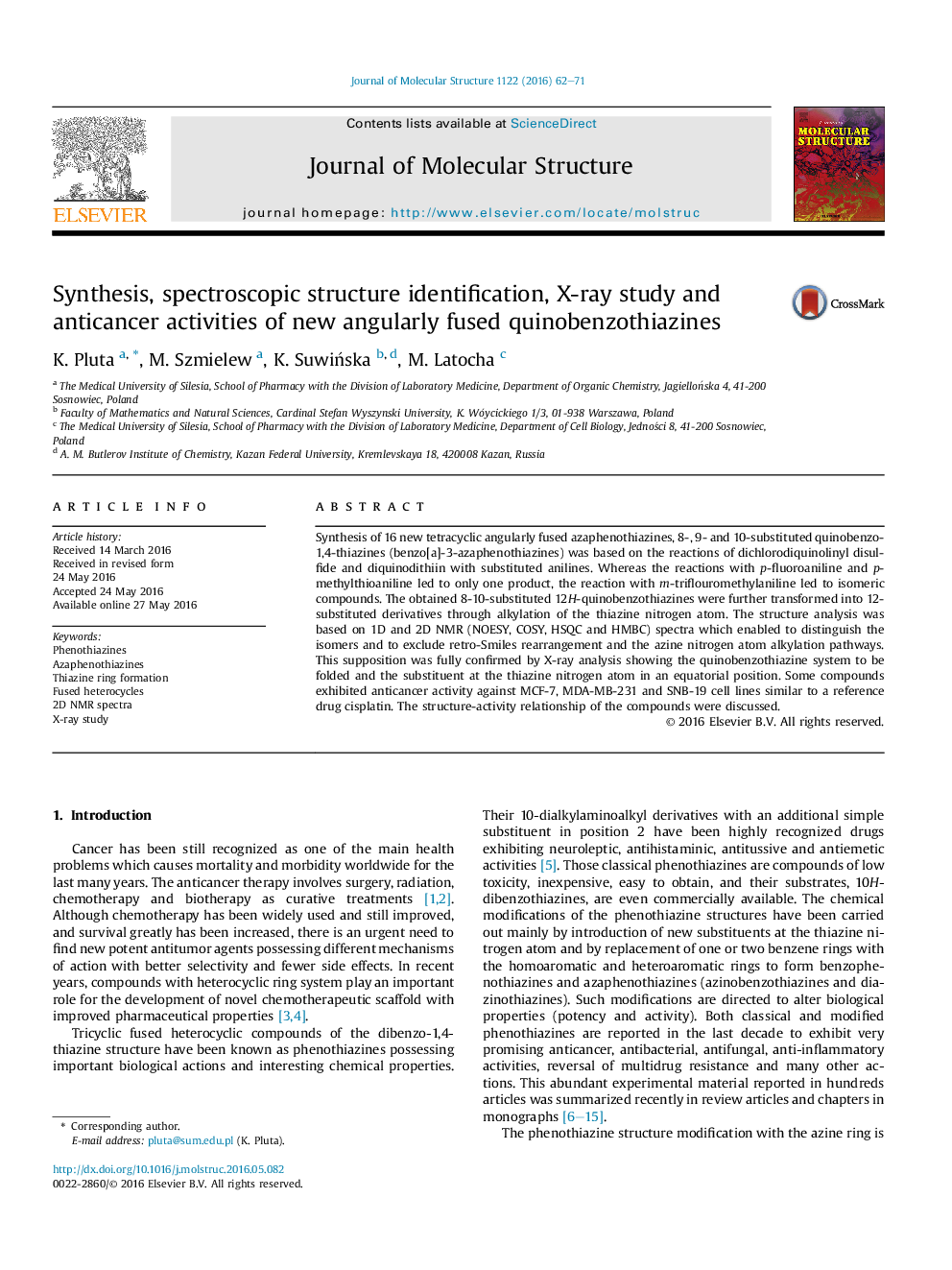| Article ID | Journal | Published Year | Pages | File Type |
|---|---|---|---|---|
| 1407669 | Journal of Molecular Structure | 2016 | 10 Pages |
•The phenothiazine system was modified with the quinoline moiety.•NOESY, COSY, HSQC and HMBC spectra showed angularly fused ring system.•Reaction pathways to quinobenzothiazines were concluded from 2D NMR spectra.•X-ray analysis of methyl derivatives showed nonplanar tetracyclic ring system.•The 1-methyl-2-piperazinylethyl derivative was more active than cisplatin.
Synthesis of 16 new tetracyclic angularly fused azaphenothiazines, 8-, 9- and 10-substituted quinobenzo-1,4-thiazines (benzo[a]-3-azaphenothiazines) was based on the reactions of dichlorodiquinolinyl disulfide and diquinodithiin with substituted anilines. Whereas the reactions with p-fluoroaniline and p-methylthioaniline led to only one product, the reaction with m-triflouromethylaniline led to isomeric compounds. The obtained 8-10-substituted 12H-quinobenzothiazines were further transformed into 12-substituted derivatives through alkylation of the thiazine nitrogen atom. The structure analysis was based on 1D and 2D NMR (NOESY, COSY, HSQC and HMBC) spectra which enabled to distinguish the isomers and to exclude retro-Smiles rearrangement and the azine nitrogen atom alkylation pathways. This supposition was fully confirmed by X-ray analysis showing the quinobenzothiazine system to be folded and the substituent at the thiazine nitrogen atom in an equatorial position. Some compounds exhibited anticancer activity against MCF-7, MDA-MB-231 and SNB-19 cell lines similar to a reference drug cisplatin. The structure-activity relationship of the compounds were discussed.
Graphical abstractFigure optionsDownload full-size imageDownload as PowerPoint slide
